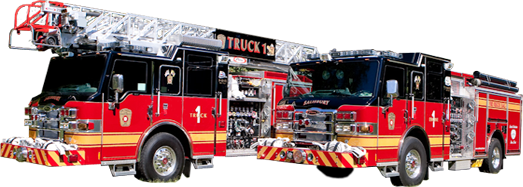Photo Gallery
Safe Driving In Heavy Rain
With all the rainy weather we’ve had as of late, the Salisbury Fire Department wants everyone to consider their personal safety, as well as that of others when it comes to driving in rainy conditions. The National Weather Service has predicted this spring to have wetter-than-normal conditions due to expected El Nino weather patterns. The SFD would like you to keep in mind that heavy downpours can be dangerous! More than half of flood fatalities are vehicle related, according to the National Weather Service, and Federal Highway Administration data shows that more weather-related crashes happen in rain than in snow or sleet. People generally slow down in snow or sleet, but fail to take into consideration the dangers of driving in wet conditions. Here’s a few safety tips relating to driving in the rain…
Drive a clean car in good condition
When visibility is limited by wet weather, it’s important that your car itself doesn’t impede your sight. Once a month, clean the outsides and insides of windshields and windows, and check your windshield wiper blades for wear. Check the level of your washer fluid once a week. Also, consider checking your headlights, taillights, turn signals, and tire treads.
Know the roads
Roads are built to withstand different weather conditions in different parts of the country, so if you’re new to an area, use extra caution during or after a storm. In many southern states, the asphalt isn’t as compressed. This means it can rain and the road can look totally dry, but it’s not. You’ll squeegee up the water that’s caught in the road aggregate, and now your tires are wet and slick and you don’t even know it.
Many Eastern Shore “back roads” are “turtle-backed” roads. They are humped, like the back of a turtle, often with little-to-no shoulder. Inattentive or weather-related hindered driving can easily and quickly put one into a bad situation.
Take a moment to consider your route, too. The Eastern Shore is low-lying land surrounded by lots of various types of water. In many areas, the roadway may be covered by water depending on the time of day as it relates to tides. Storms exacerbate this situation by making tides higher than normal. If it takes you through low-lying bridge underpasses or past ditches prone to flooding, it might be a good day to take the freeway, or stay home.
Be sure to take into consideration curves, intersections, roadway warning signs (Children At Play/Deer Crossing/School Zone/etc…), and railway crossings, as well.
Switch on lights, not brights
Though many newer cars come with automatic running lights, turn on the actual headlights when using windshield wipers so your taillights come on as well. The idea behind having headlights is so other people can see you. When you turn your headlights on and your back lights come on, you identify all four corners of the vehicle.
You don’t, however, need to flip on your brights; the brighter light will just reflect off wet surfaces, bouncing back into your eyes and irritating other drivers. (Don’t use your bright lights in fog, either!!)
Slow down!
Leave at least five seconds of following distance between your own car and the one in front, and don’t feel pressure to drive the posted speed limit. The speed listed on the side of the road/highway is the maximum speed for perfect weather and perfect road conditions, so if the road is wet, it could be too fast for existing conditions. Slow down even more for curves.
And remember: never use cruise control on wet roads. If you hydroplane under cruise control, the automatic acceleration can cause you to lose control of your vehicle when your tires regain traction.
Don’t get in too deep
If water is covering the markings on the road, it’s too deep to drive on. You can lose control with as little as three inches of water on the road. And even if you manage to stay in control, a larger vehicle could push some of that water underneath your car, causing your engine to stall.
Steer where you want to go
If you’re going too fast and end up hydroplaning turn the wheel in the direction you want to go—and don’t be afraid if you don’t steer out of the skid on the first try. It may take three to five adjustments to get back on course (and a little while longer for your heart to stop pounding). Make SMALL adjustments in your steering wheel. Let off the accelerator and keep your foot OFF the brake, until you gain control.
Hold off on unnecessary trips
It’s one thing if you need to get home to your children or you’re already on the road, but otherwise, ask yourself if you’ve driven in this kind of weather before and if you’re ready to handle it right now. When bad weather is in the forecast, a lot of people feel they have to go to the store. But just as you would stay off the roads in heavy snow, it’s OK to stay home in heavy rain.
Think ahead. As with any type of severe weather event, the time to prepare has come and gone once the storm arrives. Don’t endanger your life, the lives of your family, and others who could be affected by your failure to use common sense.
Nice weather will eventually get here. Take steps to ensure you’re around to enjoy it!! Remember: Don’t text and drive!! Stay Safe!
For more information, visit the National Safety Council’s website at http://www.nsc.org.



